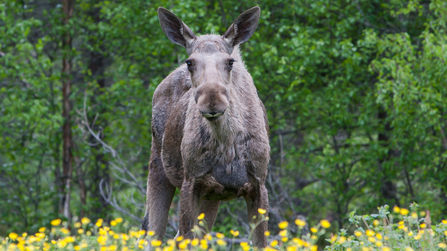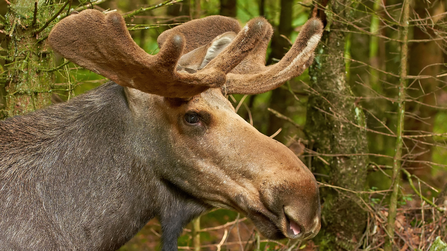Reuniting Keystone Species
Derbyshire and Nottinghamshire Wildlife Trusts, supported by Rewilding Britain, are working together to explore the potential for bringing back Eurasian elk. Our project is working towards the possibility of reintroducing elk into two existing beaver enclosures, bringing these two keystone species together for the first time in 3,000 years in the UK.
The Rewilding Innovation Fund will support the first steps in researching and understanding the potential for elk reintroduction.
Who Are the Eurasian Elk?
Closely related to the North American moose, Eurasian elk (Alces alces) are large, semi-aquatic deer that went extinct in Britain around 2,000 to 3,000 years ago. Today, they are widespread in Scandinavia and Poland and are slowly moving west. There are now around 50 elk in the Oder Delta on the Polish-German border.
Why Did Elk Disappear from Britain?
Eurasian elk once roamed Britain but became extinct around 2,000 to 3,000 years ago. Increased hunting by humans is thought to be the most significant factor in their decline and eventual extinction.
This was further compounded by habitat loss and fragmentation. Changes in land use, such as deforestation and agricultural intensification, reduced the suitable habitats elk depended on.
In Europe, elk have naturally recolonised areas of their former range by moving across land from their historic strongholds. However, because the UK is an island, the lack of land connectivity has prevented their return.



